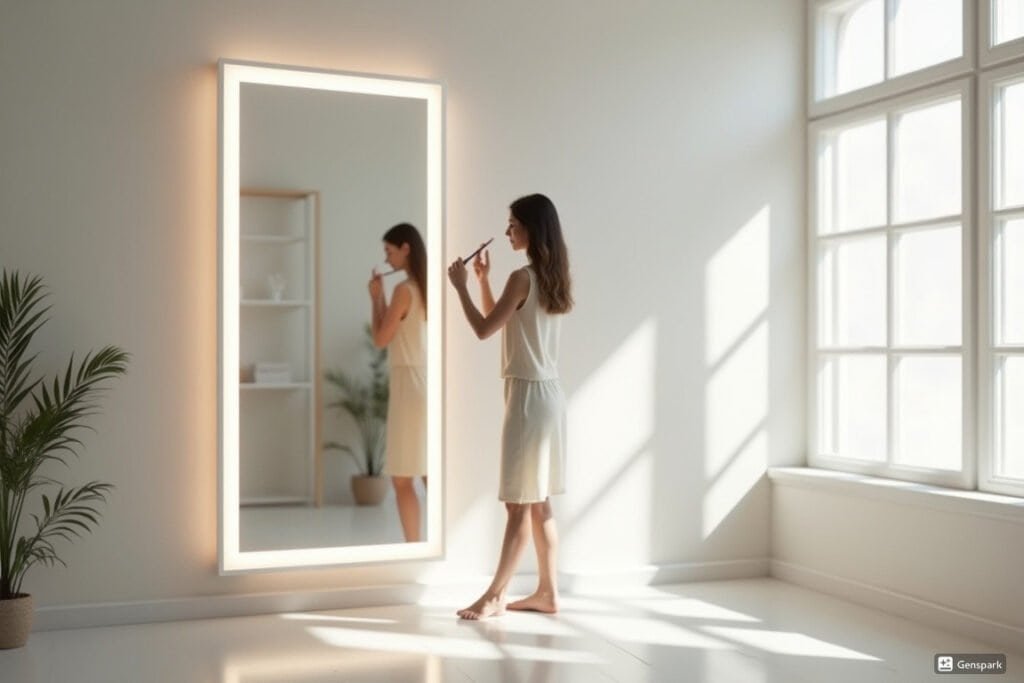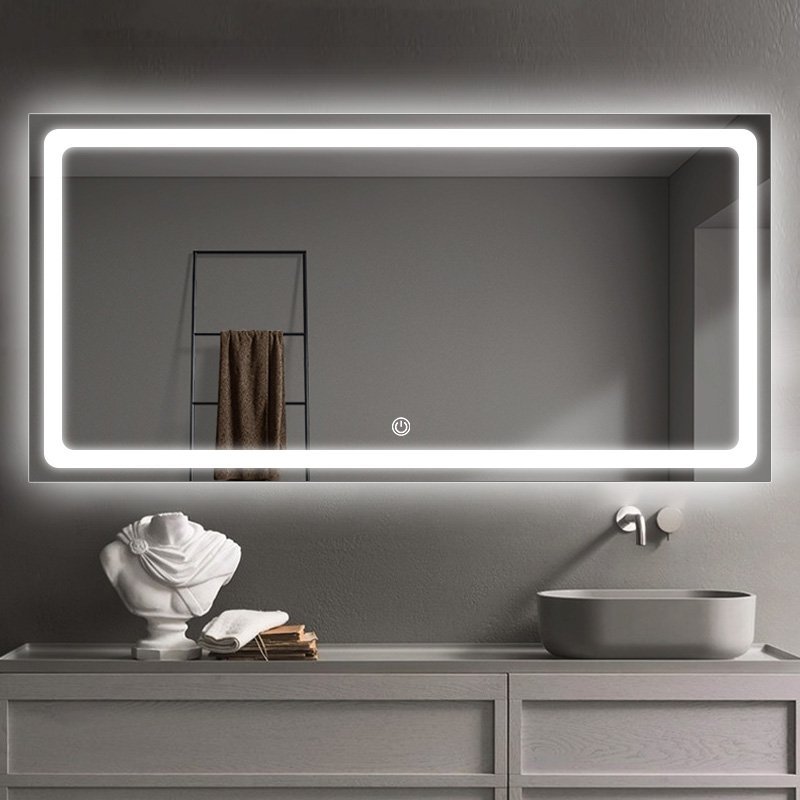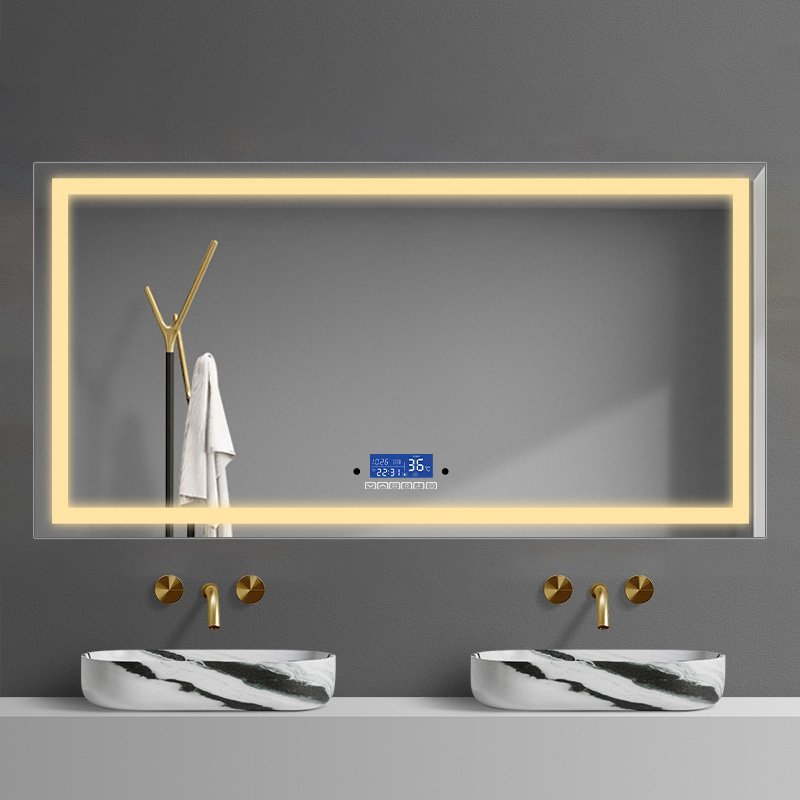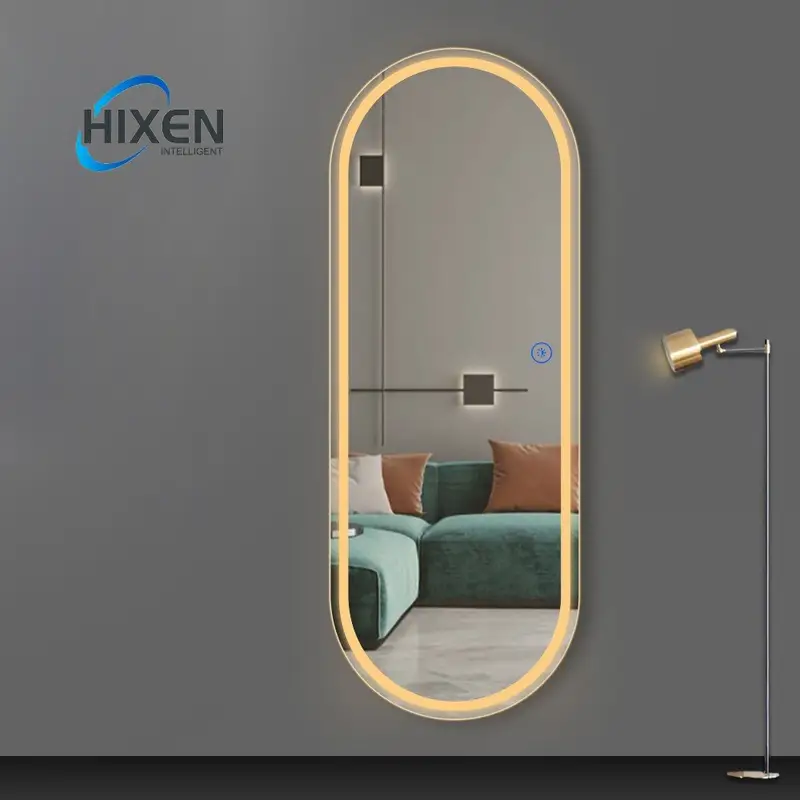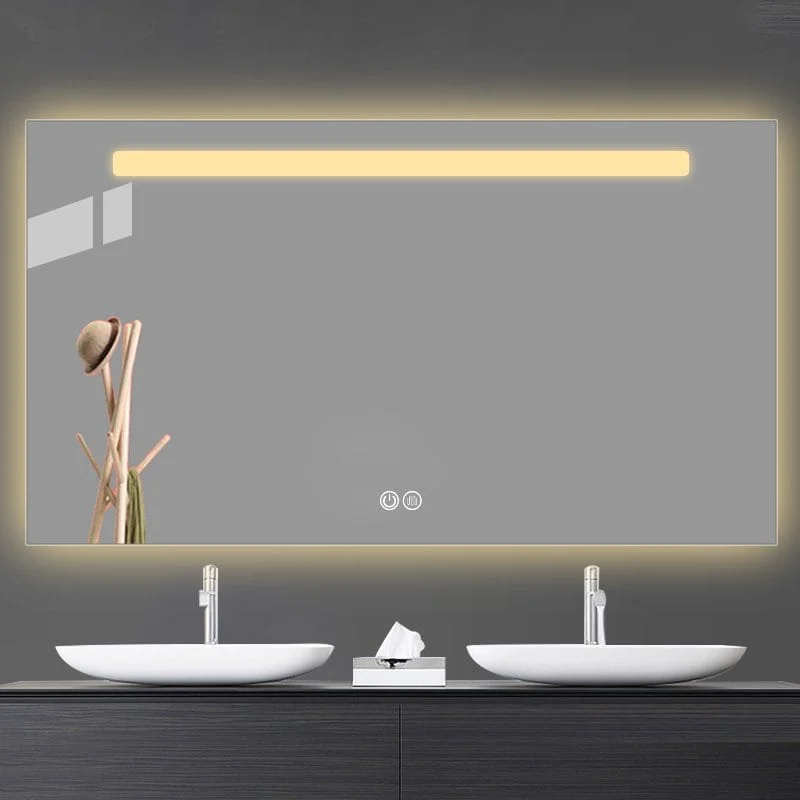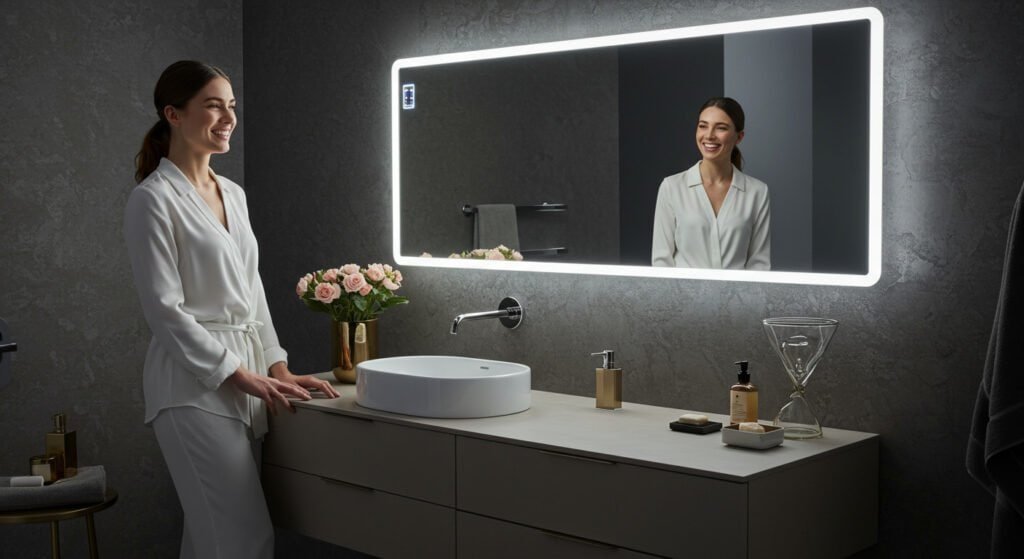|
Obtenir votre Trinity Audio joueur prêt ...
|
Quelle est la longueur d'un miroir pleine longueur? Choisir la mauvaise taille de miroir peut vous frustrer avec des reflets incomplets et un espace mural gaspillé.. Les dimensions de votre miroir pleine longueur ont un impact direct sur la fonctionnalité et l'esthétique de la pièce..
Un miroir pleine longueur standard mesure généralement 48 à 72 pouces de hauteur et 12 à 24 pouces de largeur. These dimensions accommodate most adults for complete body viewing while fitting various room layouts and wall configurations effectively.
Understanding these measurements helps you make informed decisions for your specific space and requirements. This comprehensive guide provides precise measurements and selection criteria for optimal mirror sizing.
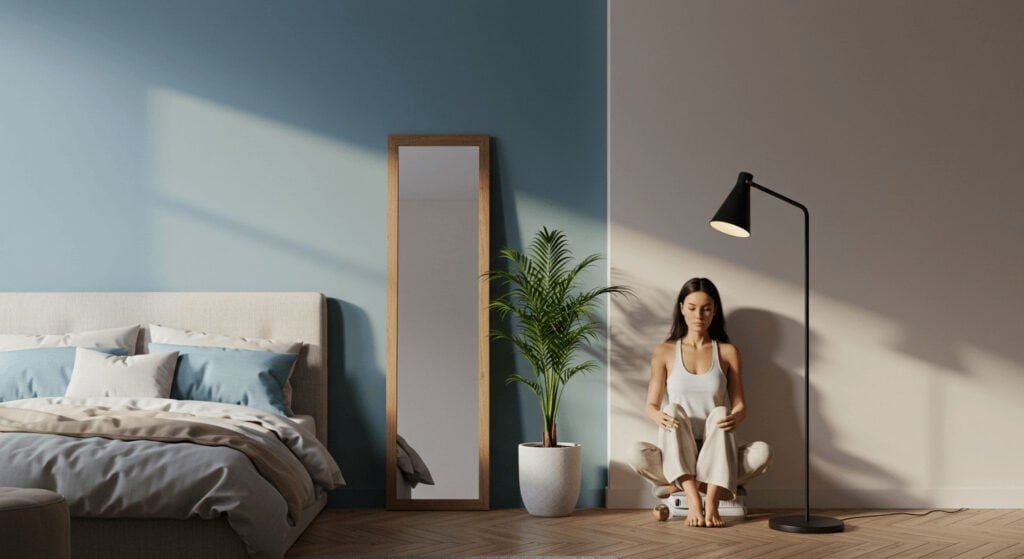
What Are the Standard Dimensions for Full Length Mirrors?
The mirror industry has established consistent sizing standards to meet diverse consumer needs and manufacturing efficiency. These standardized dimensions ensure compatibility with common door frames, wall spaces, and furniture arrangements across residential and commercial applications.
Standard full length mirror sizes range from 48×12 inches to 72×24 pouces, with popular configurations including 60×16 inches and 66×18 inches for optimal viewing coverage.
Manufacturing standards typically offer full length mirrors in incremental sizes to accommodate different ceiling heights and user preferences. The most common height options include 48, 60, 66, et 72 pouces, while width variations span from 12 à 24 pouces. These dimensions have evolved based on average human proportions and architectural standards.
For specialized applications, custom manufacturers can produce mirrors exceeding these standard measurements, particularly for commercial installations or unique residential requirements. The Ikea full length mirror collection exemplifies these industry standards, offering reliable dimensions that work effectively in most residential settings.
De quelle taille miroir pleine longueur ai-je besoin?
Personal requirements vary significantly based on individual height, intended usage, and spatial constraints. Proper sizing ensures you can view your complete reflection without awkward positioning or incomplete coverage of your appearance.
Select a mirror at least half your height plus 12 inches for complete body viewing, considering your tallest household member and primary usage scenarios.
Your specific needs depend on several critical factors including user height, mounting position, and viewing distance. Pour les personnes de moins de 5’6″, a 48-inch mirror typically suffices, while taller users require 60 to 72-inch options for comfortable viewing. Consider whether the mirror serves purely functional purposes or acts as a decorative wall mirror with lights for enhanced ambiance.
Installation height affects required mirror length significantly, as eye-level mounting reduces necessary mirror height compared to floor-level positioning. Led mirror options provide additional functionality while maintaining standard sizing requirements, making them suitable alternatives for bathrooms or dressing areas where enhanced lighting improves visibility and usability.
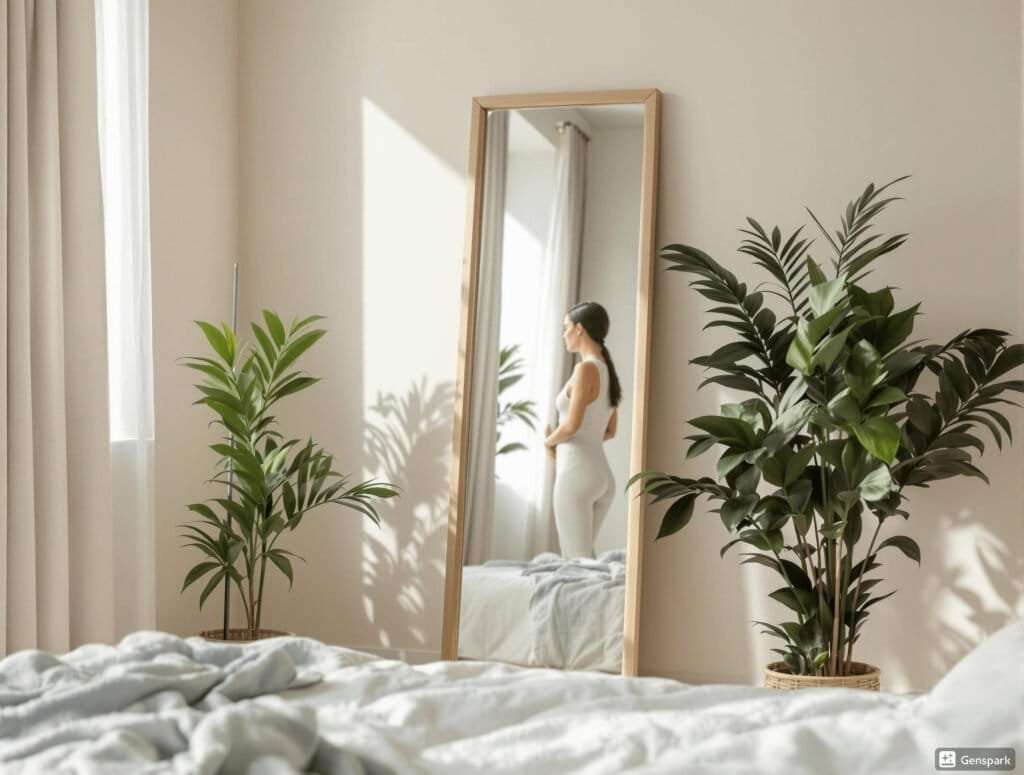
What Is the Best Size Full-Length Mirror?
The optimal mirror size balances functionality, esthétique, and spatial constraints rather than following a universal standard. Best size depends on your specific environment, usage patterns, and personal preferences for both practical and decorative purposes.
Most users find 60×18 inch mirrors provide excellent functionality while maintaining proportional aesthetics in standard residential rooms and hallway configurations.
This recommendation stems from practical testing across various room sizes and user demographics. A 60-inch height accommodates users up to 6 pieds de haut confortablement, while the 18-inch width provides adequate peripheral vision without overwhelming smaller spaces. Glass mirror quality becomes crucial at this size, as larger surfaces amplify any optical distortions or manufacturing defects.
Modern lighted mirrors for bathrooms often utilize these dimensions effectively, combining full-body viewing with enhanced illumination features. The proportional relationship between height and width at this size creates pleasing visual balance when mounted on walls, avoiding the narrow appearance of smaller mirrors or the imposing presence of oversized alternatives. These dimensions also align well with standard door widths and typical furniture heights, creating harmonious integration within existing room layouts.
What Are Standard Mirror Sizes?
Mirror sizing standards encompass various categories beyond full length options, including bathroom vanity mirrors, decorative wall mirrors, and specialized applications. Understanding these standards helps coordinate mirror selections throughout your home or commercial space.
Standard mirror categories include full length mirrors at 48-72 pouces, bathroom vanity mirrors at 24-48 pouces, and accent mirrors ranging from 12-36 inches in diameter or width.
The bathroom mirror category deserves particular attention due to its functional requirements and moisture considerations. Led bathroom mirror options typically follow standard vanity widths of 24, 30, 36, et 48 inches to align with common cabinet sizes. Lighted vanity mirrors for bathroom applications maintain these proportions while incorporating illumination systems that enhance daily grooming routines.
Rectangular bathroom mirrors often measure 30×24 inches or 36×28 inches to provide optimal face and upper body coverage for multiple users. Small bathroom mirror options scale down proportionally, with 24×18 inch dimensions serving compact powder rooms effectively. These sizing standards ensure compatibility with plumbing fixtures, electrical connections, and typical bathroom layouts while maintaining functional effectiveness across different installation scenarios.
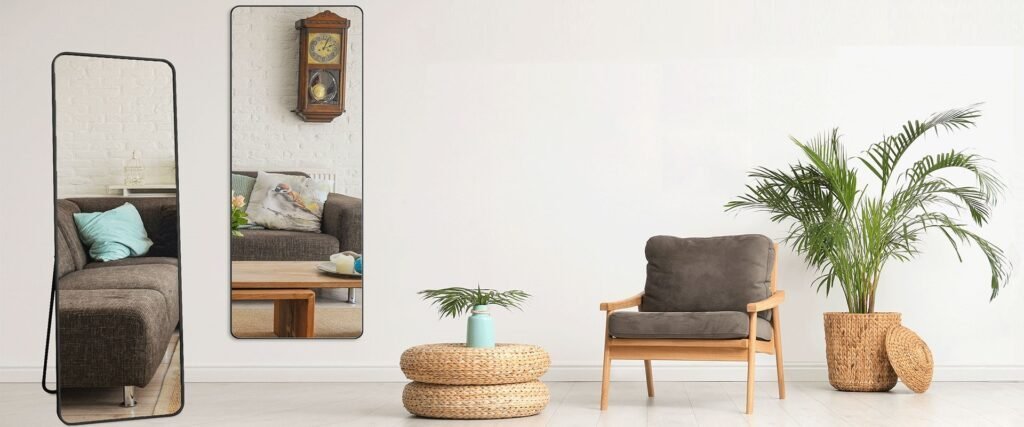
Should a Full-Length Mirror Be Taller Than Me?
Mirror height relative to user height significantly impacts viewing effectiveness and installation requirements. The relationship between your height and mirror dimensions determines optimal positioning and overall functionality for daily use.
Your full length mirror should extend at least 6 inches above your head and reach within 12 inches of floor level when mounted at appropriate height for complete body viewing.
This sizing approach accounts for natural viewing angles and ensures complete reflection coverage without requiring uncomfortable positioning. The mirror mounting height affects these calculations substantially, as higher installation positions require taller mirrors to maintain floor-to-head coverage. Lighted makeup mirror applications often utilize this principle, positioning illuminated surfaces to optimize facial visibility while maintaining full upper-body coverage.
When selecting mirrors with black frame options, the frame width can reduce actual reflective surface area, requiring slight size increases to compensate for border coverage. Installation flexibility allows adjustment of these proportions based on primary users, with family situations requiring consideration of the tallest regular user to ensure universal functionality across household members.
How Wide Is a Standard Full-Length Mirror?
Mirror width affects both functional coverage and visual proportions within room settings. Standard width measurements balance adequate peripheral vision with space efficiency and aesthetic proportionality for various installation locations.
Standard full-length mirror widths range from 12 à 24 pouces, avec 16 à 18 inches providing optimal balance between coverage and spatial efficiency for most applications.
Width selection depends primarily on intended usage and available wall space rather than user physical dimensions. Narrow 12-inch mirrors work effectively in tight spaces like closet doors or narrow hallways while providing basic full-body viewing. Wider 20 to 24-inch options offer enhanced peripheral vision beneficial for outfit coordination and movement assessment.
Backlit mirror designs often utilize wider formats to distribute illumination evenly across the reflective surface, creating more uniform lighting conditions. Led vanity mirror applications frequently employ 18 to 24-inch widths to accommodate side lighting elements while maintaining sleek profiles. The width choice also impacts shipping and installation logistics, with wider mirrors requiring additional handling considerations and potentially affecting doorway clearance during delivery and positioning.
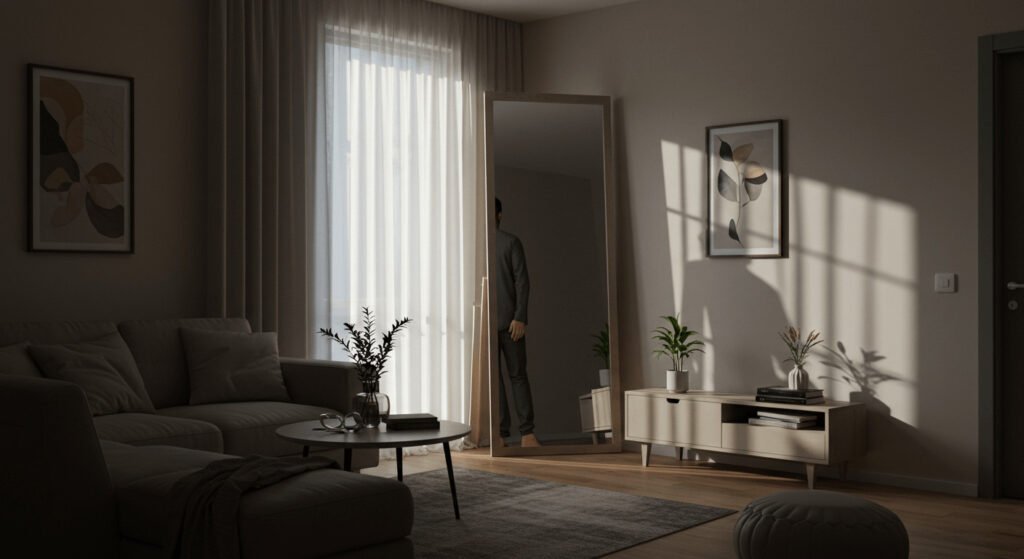
What Is the Rule of Thumb for Mirror Size?
Industry professionals utilize established guidelines to simplify mirror selection for various applications and user requirements. These practical rules eliminate complex calculations while ensuring functional effectiveness across different scenarios and installation contexts.
The fundamental rule requires mirror height of at least half the user’s height plus 12 additional inches, with width proportional to intended coverage area and room scale.
This formula provides reliable starting points for most residential applications while allowing adjustments for specific circumstances. Pour les applications de salle de bain, the rule adapts to require mirror width matching or slightly exceeding the vanity width for proportional aesthetics. Lighted bathroom mirror selections benefit from additional considerations including light distribution patterns and electrical placement requirements.
Led light mirror vanity installations often require wider dimensions to accommodate integrated lighting systems effectively. The rule scales appropriately for different room sizes, with larger spaces accommodating proportionally larger mirrors without overwhelming visual balance. Professional designers frequently modify these guidelines based on ceiling height, furniture placement, and overall design themes, but the basic formula provides reliable foundation measurements for most selection decisions.

Quelle taille de miroir rend une pièce plus grande?
Mirror sizing strategies can significantly enhance spatial perception through strategic reflection and light manipulation. Proper mirror selection and positioning create illusions of expanded space, improved lighting conditions, and enhanced room proportions.
Large mirrors measuring 60+ inches in height or covering significant wall percentages create maximum spatial expansion effects through comprehensive reflection and light multiplication throughout the room.
The spatial enhancement effect depends on mirror placement, surrounding lighting conditions, and reflective content quality rather than size alone. Light up vanity mirror options contribute additional illumination that amplifies the space-expanding effect through increased ambient lighting levels. Wall mirror with lights configurations provide dual benefits of reflection and illumination, creating brighter environments that naturally appear more spacious.
Modern bathroom mirror installations often utilize this principle, positioning large reflective surfaces opposite windows or light sources to maximize natural light distribution. Room mirror ideas frequently incorporate multiple mirrors of varying sizes to create layered reflection effects that enhance depth perception. The key lies in balancing mirror size with room proportions, avoiding overwhelming smaller spaces while ensuring adequate coverage for effective light and space multiplication in larger areas.
How to Choose the Right Full Length Mirror Size for Your Space?
Space-specific mirror selection requires careful consideration of room dimensions, usage patterns, and integration with existing furnishings and architectural features. Proper sizing enhances both functionality and aesthetic appeal while maintaining proportional harmony within your environment.
Measure your available wall space, subtract 6 inches from height and 4 inches from width for clearance, then select the largest mirror fitting these constraints while meeting your functional requirements.
Successful mirror selection involves analyzing multiple spatial factors simultaneously. Bedroom installations typically accommodate larger mirrors due to generous wall space and private usage patterns, allowing for 66 to 72-inch heights without overwhelming the environment.
Bathroom vanity lights positioning affects mirror sizing decisions, as integrated lighting systems require coordination between mirror dimensions and electrical installations. Led vanity mirror options often provide flexibility in sizing while incorporating essential lighting features for grooming activities. Hallway installations generally require narrower profiles to maintain traffic flow while providing adequate reflection coverage.
Consider ceiling height limitations, furniture clearance requirements, and door swing patterns when finalizing dimensions. The integration with existing decor elements, including vanity lights and architectural features, influences both size selection and positioning decisions for optimal functionality and visual appeal throughout your space.

Conclusion
Selecting the appropriate full length mirror size requires balancing standard dimensions with your specific spatial and functional requirements. The industry standard range of 48 à 72 inches in height provides reliable guidelines for most applications while accommodating individual preferences and room constraints.
- Pour apprendre à choisir le bon miroir de salle de bain, cliquez ici.
- Pour apprendre à installer un miroir, choisissez ici.
- Pour apprendre à choisir le miroir de bonne taille, cliquez ici.
- Pour apprendre comment les miroirs sont fabriqués ici.
- Cliquez ici et vous apprendrez pourquoi nous avons l'air mieux dans les miroirs.
- Cliquez ici, vous découvrirez le haut 10 fabricants de miroir LED pour 2024.
- Cliquez ici pour découvrir pourquoi ma lumière miroir de vanité ne s'allume pas?
- Découvrez quelle est la taille du miroir de salle de bain? Cliquez ici
- Cliquez ici si vous ne savez pas comment nettoyer votre miroir
- Pour savoir comment réparer le miroir du capteur tactile ne fonctionne pas, cliquez ici
- Découvrir 10 Problèmes de miroir de salle de bain LED commun Cliquez ici

